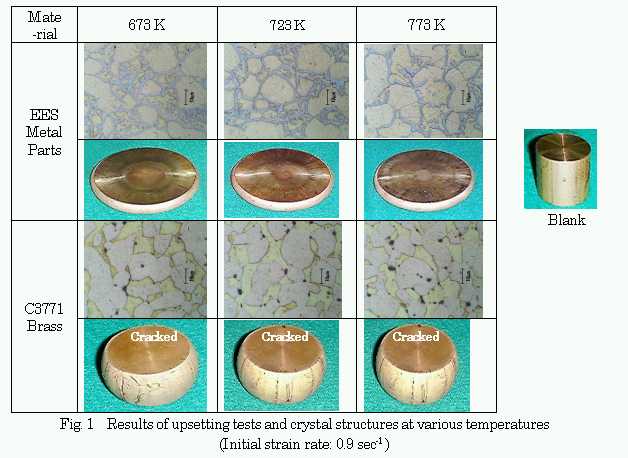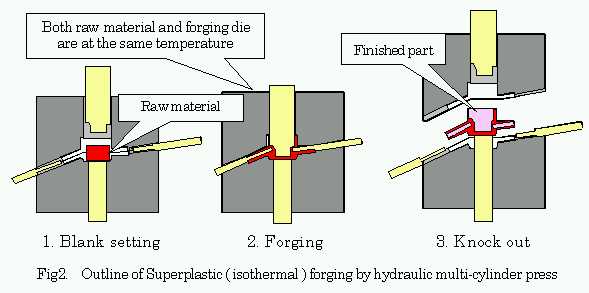


|
Development of Superplasticity Copper Alloy
and New Forging Method and its Application to Mass Production 1. Abstract Water supply related products, represented by faucets, had been regulated to use bronze as brass frequently becomes corrosive. In 1991, the JIS standard was amended, and manufacturers could have freedom in selecting the material for the faucets. Following this deregulation, we have been promoting the application of forging and high speed machining technology by utilizing marketed high corrosion-resistance brass rods. But brass cannot be cast to form complex shapes and has no way to overcome erosion-corrosion by water flow cavity and stress corrosion cracking. We promoted technology by self-developing both materials and forging technologies. As the results, we have succeeded in developing EES (Economy, Ecology and Safety) metal parts which have special concepts as follows. 1. Highest recycling ratio just the same as conventional Cu alloys. 2. Removal of Pb (lead) added for machinability by Near Net Shape Forging. 3. High mechanical properties . 4. High corrosion resistance. 2. Developed technologies. 2-1.Development of the high speed superplastic Cu alloy. In order to realize the forging of complex and precise shaped parts, cost reduction with the lead-free material, the following conditions must be fulfilled. (1) The superplastic elongation should be realized at the temperrature below 800K. The forging temperature shall be within the range ,in which less expensive and easy to purchase tool steel for hot forging can be used. (2) The material should have high speed deformation characteristics. The productivity shall be the same level as conventional forging. (3) The material should be manufactured by the existing facility for brass rod. Based on the chemical composition such as [Cu;59%,Sn;3%,Pb<0.01%,Zn;bal.] (Table 1.) ,we designed "α・β・γ" triple-phase structure by using hard γ phase which can be obtained in the Cu/Zn alloy containing Sn as follows. (1) Optimization of the ratio α:β:γ at isothermal forging temperature below 800K by controlling of the volume of Cu,Sn and Zn. (2) Grain refinement by hot extrusion at low temperature. [smaller than 15μm in grain size] It is considered that this high elongation at low temperature is created by the grain boundary sliding between the α・β・γ phases, and we could obtain superplastic deformation at the practical high speed of initial strain rate of 0.9 sec-1 (Fig.1).   2-2. Development of the isothermal forging. In order to fully utilize the best elongation characteristics of the new material, we have developed a new isothermal closed die forging process by using the hydraulic multi-cylinder press (Fig.2). By combining the material (EES metal) and this forging process, the near net shape forging is realized by avoiding temperature drop by the metal die. As a result , we could forge a complicated shape having and precise deep holes [L/D>10] without draft angle (Fig.3).   2-3. Improvement of mechanical properties by solution treatment. By solution treatment of Sn added EES metal , we could get high strength and good elongation about the same as austenitic stainless steel. Furthermore , by applying various heat treatment patterns, of mechanical property EES metal can be changed, resulting in the wide application of the Cu alloy. 3. Conclusion Although Cu alloys have the highest recycling ratio among various kind of metals ,nevertheless due to the absence of remarkable characteristics, the consumption of Cu alloys is decreasing recently. However , we could find new special characteristics of Cu alloys by adding Sn with crystal structure control and heat treatment ,and we can also expect further important of Cu alloys in the future. On the other hand, the market demand for the low cost Pb free products is increasing sharply from the viewpoints of environment and safety. In response to these demands, we hope to expand the application of EES metal through cooperation between academia and industries. |
|
Please feedback us! wwwadmin@jsme.or.jp All Rights Reserved, Copyright (C) 1996, The Japan Society of Mechanical Engineers. |